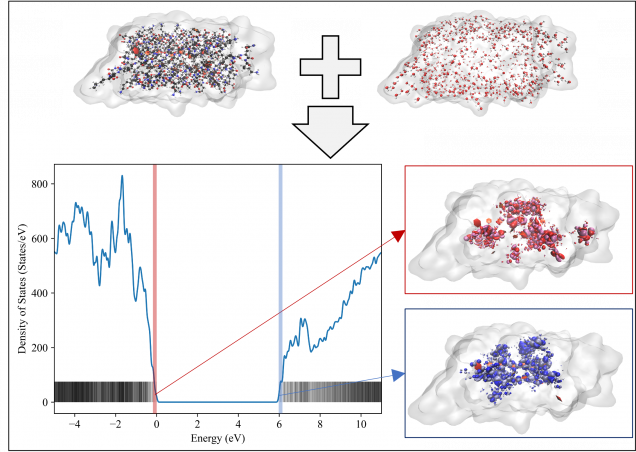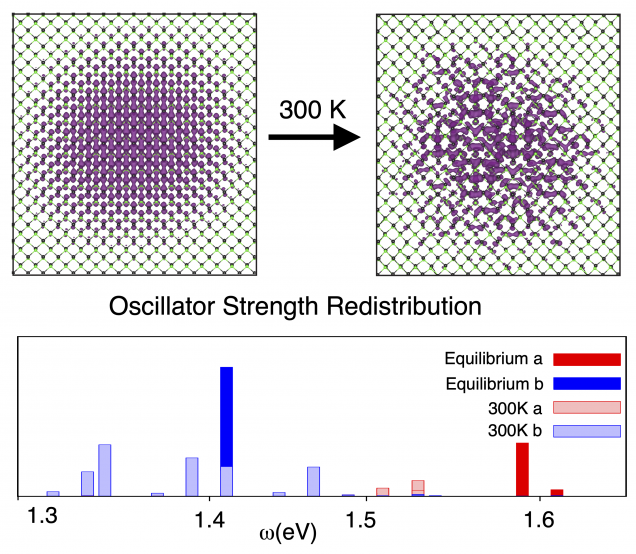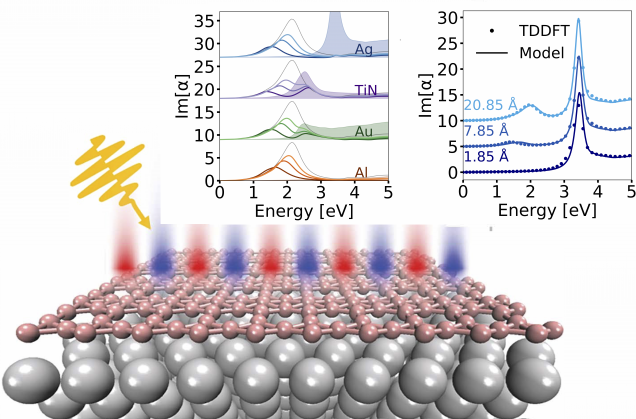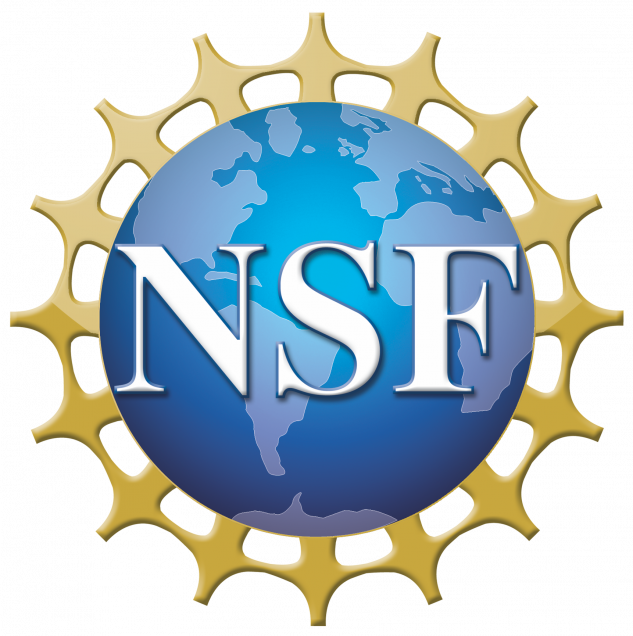Our research group is focused on computational materials science, with current emphasis on understanding excited-state phenomena within organic and ionic optoelectronic materials for renewable energy and display technologies. Much of this work utilizes first-principles density functional theory (DFT) and beyond DFT approaches that accurately predict measurable properties of materials. We often work closely with experimentalists in order to both validate our predictions and interpret measurements.
Current Projects
How does solid-state morphology affect optical excitations in organic materials?
Extended organic molecular assemblies are challenging for first-principles modeling due to long-range electron-electron and electron-phonon interactions. We apply TDDFT with long-range corrected exchange correlation functionals and GW/BSE to model these excitations, incorporating electron-phonon interactions by treating atoms as classical particles. Specifically, we are studying:
-
- Vibronic effects in organic photovoltaic materials
- Transport properties and electronic structure of conductive biopolymers
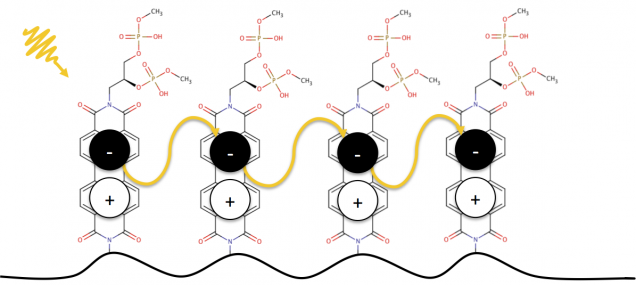
Electron-phonon interactions in low-dimensional and layered materials
Reduced dimensionality results in reduced solid-state screening and novel optoelectronic properties in materials. Understanding the interplay of electronic, nuclear, and collective excitations is critical in forming a robust, predictive understanding of their physical properties. For this class of materials, we are specifically interested in:
- The role of exciton-phonon interactions on the optical properties of 2D materials
- Predicting the Raman spectrum of metallophillically bound metal nanowires
Plasmonic and single-particle excitations in 2D and layered metals
We use first-principles theory to calculate how plasmonic and electronic excitations in 2D materials are influenced by lattice dynamics and by the presence of a substrate. The goal of this work is to present physically motivated models of these phenomena. Specific projects include:
- The role of the substrate in quenching of plasmonic excitations in borophene
- Optomechanical coupling and phase change dynamics in the commensurate charge density wave material TaS2
First principles modeling of defects in extended materials
Whether naturally occurring or synthesized, defects in materials can significantly influence optoelectronic properties. We aim to understand, and thus, control, the excited-state properties of defective materials. Specific projects of interest are:
- Localized point defects in bulk and 2D semiconductors
- Multi-scale modeling of the influence of defects in next-generation battery electrode materials.
- Electronic structure of sp3 defects in single walled carbon nanotubes (SWCNTs) for quantum information science
Development of tuned and screened range separated hybrid exchange correlation functionals for describing defects
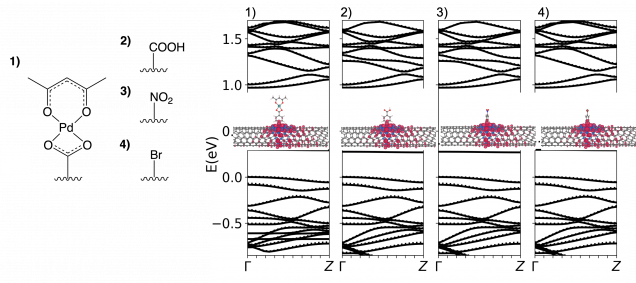
Funding:
National Science Foundation
- DMR-2011967 “UCI MRSEC: Materials Discovery Through Atomic Level Structural Design and Charge Control” (2020-2025)
- DMR-1847774 “CAREER: First-Principles Investigation of Energy Transport Within Ordered Organic Assemblies” (2019-2024)
Department of Energy
- DE-SC0020437 “Control of Energy Transport and Transduction in Photosynthetic Down-Conversion” (2019-2024)
- DE-SC0023402 “Theoretical Understanding of the Excitonic Properties of Low-Dimensional Materials ” (2022-2025)
